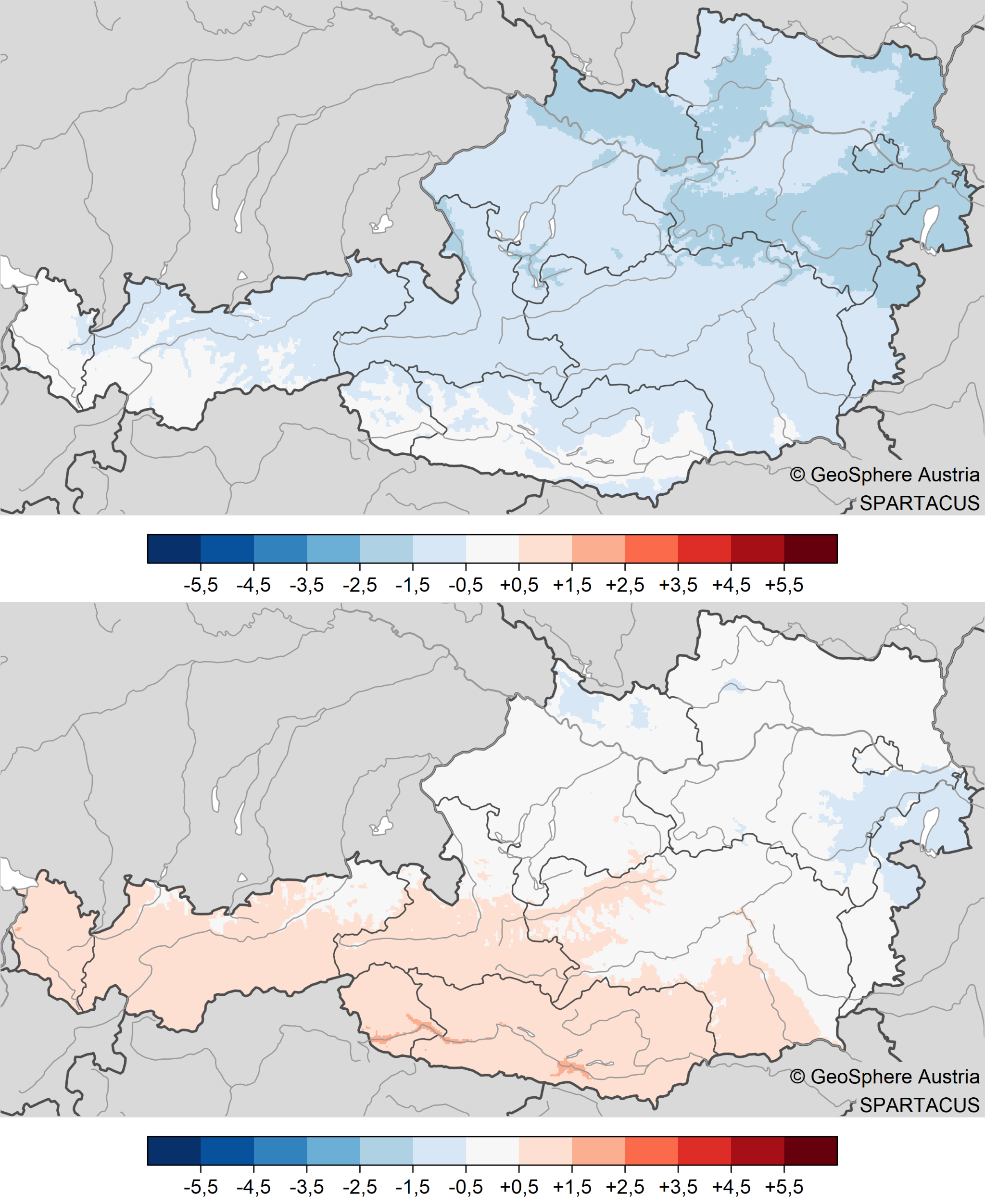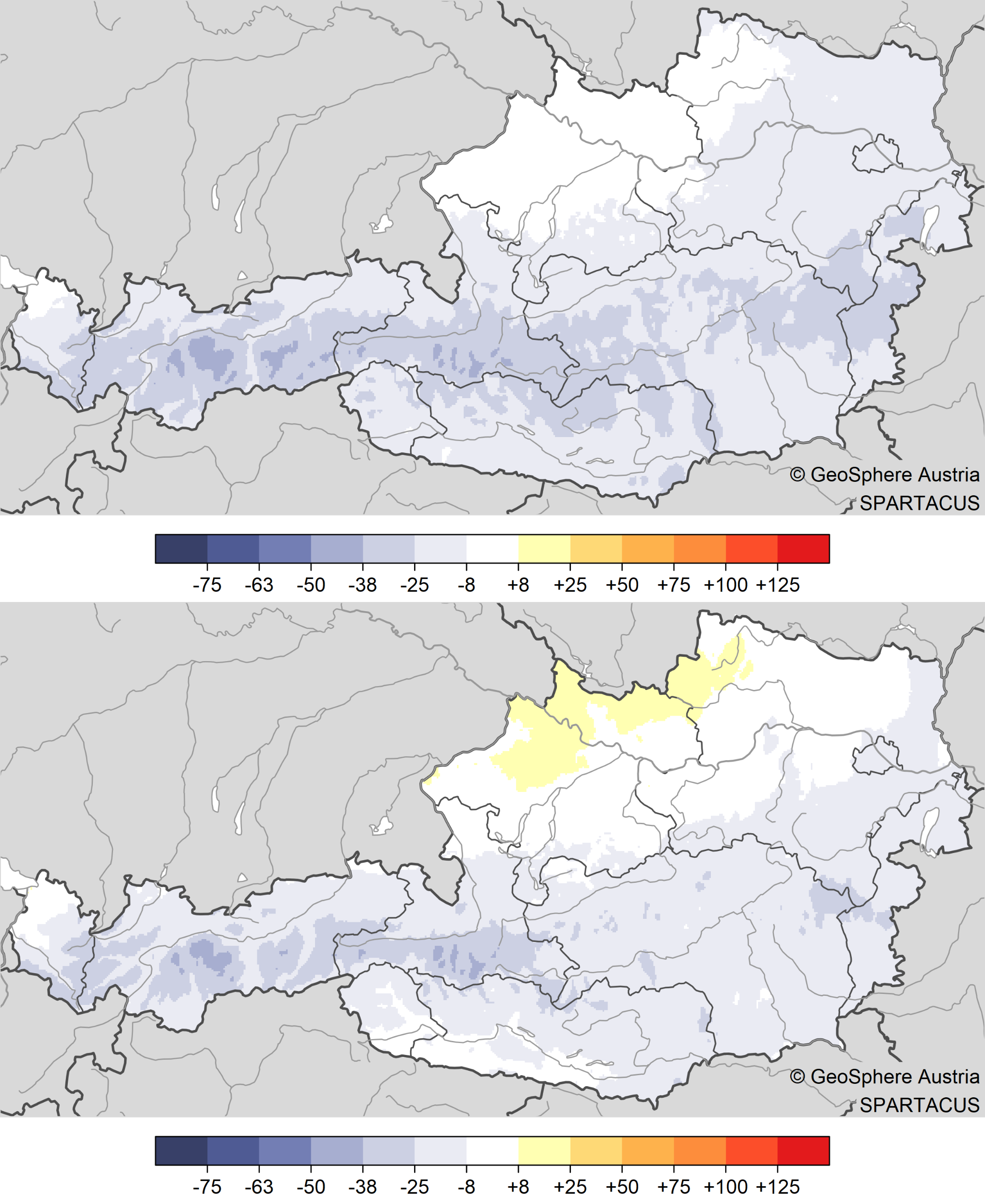Relatively cool May 2025
Relatively cool compared to the recent past. Sunshine duration below average. Partly too dry in the eastern half of Austria.
In May 2025, there were predominantly weather conditions with cool air from the north to north-west. Only at the beginning and end of the month was it warmer than average for a few days.
‘May 2025 was a little too cool for the recent past: it was 0.9 °C below the average for the 1991 to 2020 climate period in Austria's lowlands and 0.8 °C below the average in the mountains,’ says climatologist Alexander Orlik from GeoSphere Austria. "A few decades ago, this would have been a slightly milder-than-average month: Compared to the 1961 to 1990 climate period, May 2025 was 0.5 °C above average in the lowlands and 0.7 °C above average in the mountains."
Typical for May, there was a late frost and the first heat: GeoSphere Austria recorded the lowest temperature of the month at an inhabited location on 10 May in Liebenau in the Mühlviertel region at -7.3 °C. The highest value of the past month was 31.5 °C on 31 May at the Innsbruck University weather station.
Overall, however, it was significantly less often warm in summer than in an average May in the recent past (comparison with the 1991-2020 climate period): In May 2025, there were four summer days (at least 25 °C) on average across Austria below 500 metres above sea level. This is 35 per cent less than the long-term average. At altitudes between 500 and 1000 metres above sea level, there were only three summer days in May 2025, which is 25 per cent fewer than the long-term average.
In the Austria-wide analysis, the amount of precipitation in May 2025 was within the usual range of variation (7 per cent above the long-term average). However, there were significant regional differences. There was 15 to 50 per cent more precipitation than in an average May, especially from the Rätikon in Vorarlberg across large parts of North Tyrol to East Tyrol and Upper Carinthia as well as in Pinzgau, Pongau and Lungau.
In the eastern half of Austria, on the other hand, it was a little too dry. Especially from Flachgau to Mühlviertel, Waldviertel and Weinviertel as well as in the Vienna area and southern Styria, there were deviations in the amount of precipitation of 15 to 65 per cent compared to an average May.
The number of hours of sunshine in May 2025 was 19 per cent below the long-term average. This means another relatively cloudy May. Since 2013, May has almost always been too cloudy; only in 2017 and 2018 was May relatively sunny.
The cool May dampened nature's development somewhat, but nature is already well ahead due to the very mild previous months. For example, the robinia began flowering on average across Austria on 1 May 2025, 11 days earlier than the average for the period 1991 to 2020 and 23 days earlier than the average for the period 1961 to 1990.
Translated with DeepL.com (free version)



